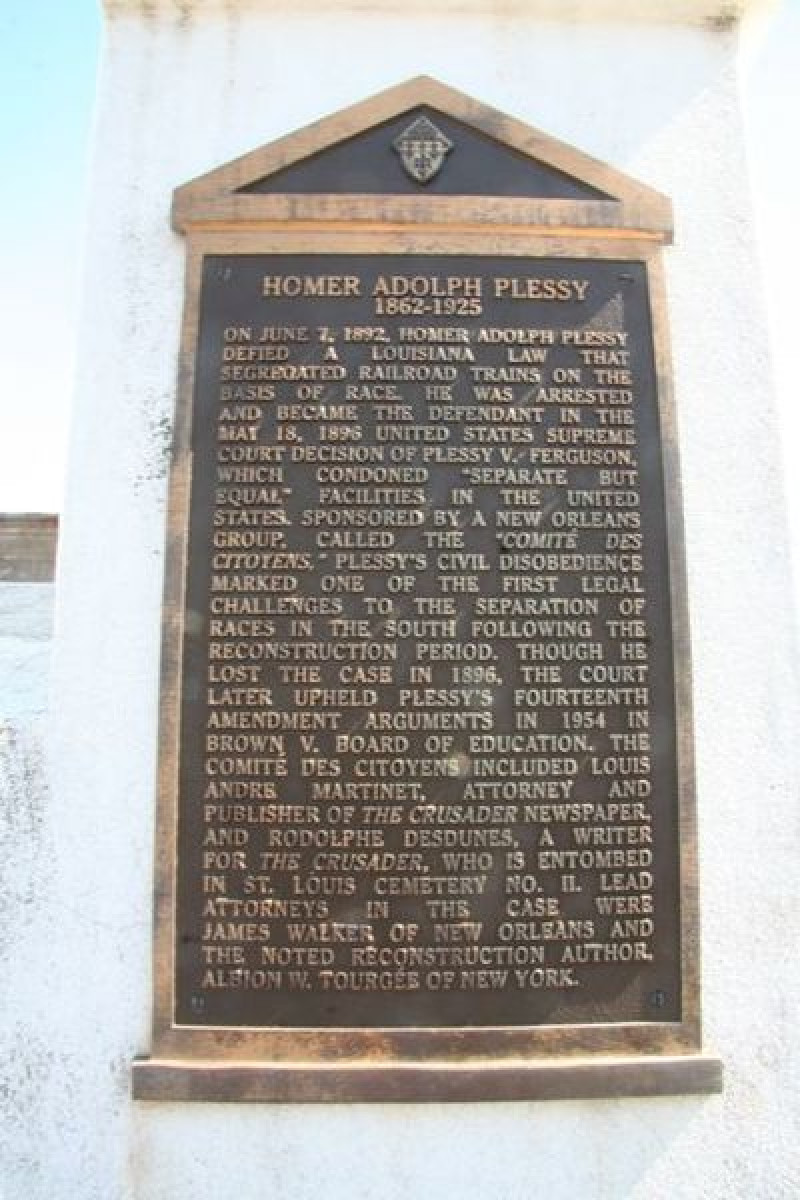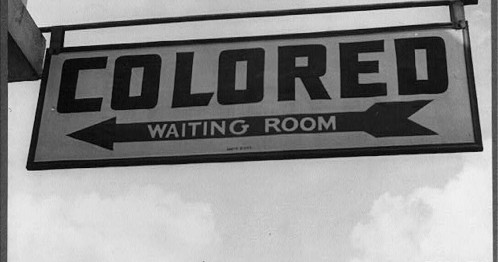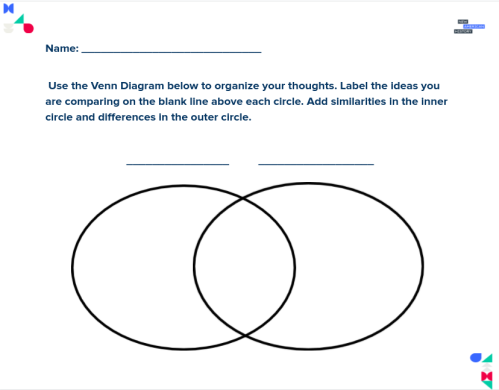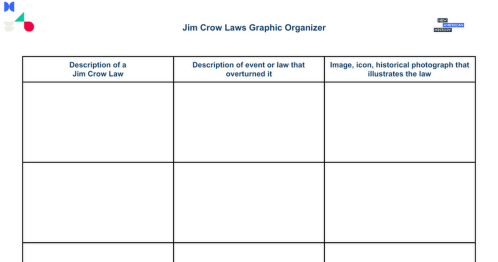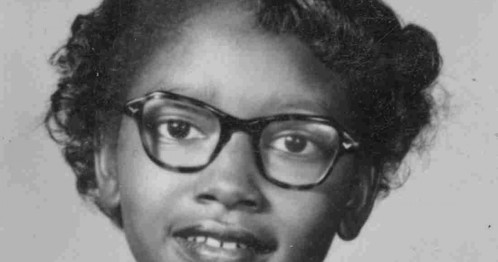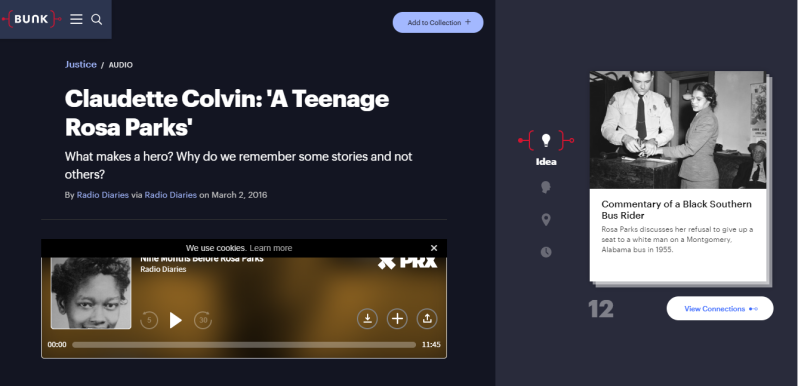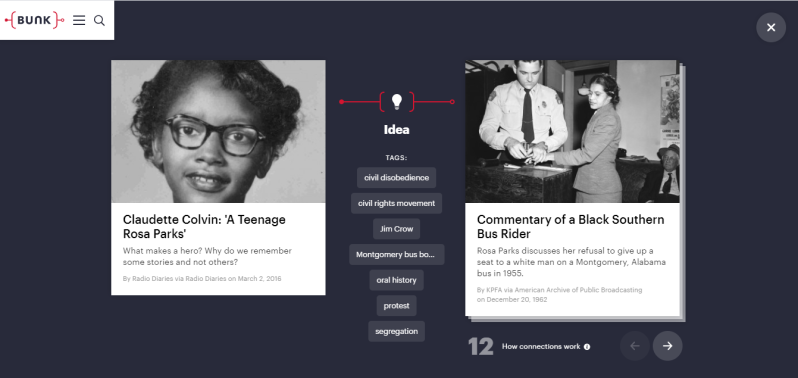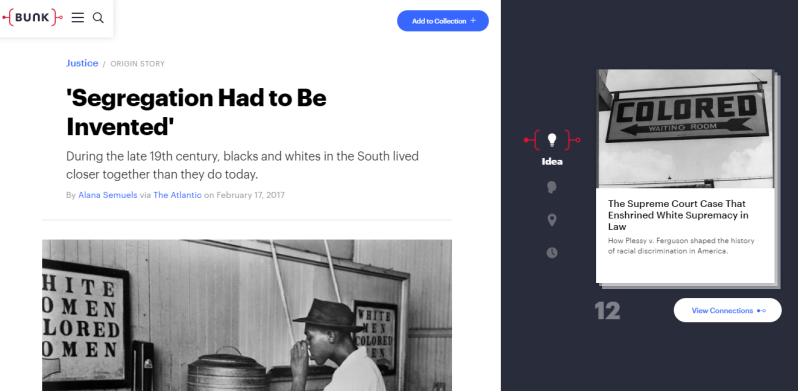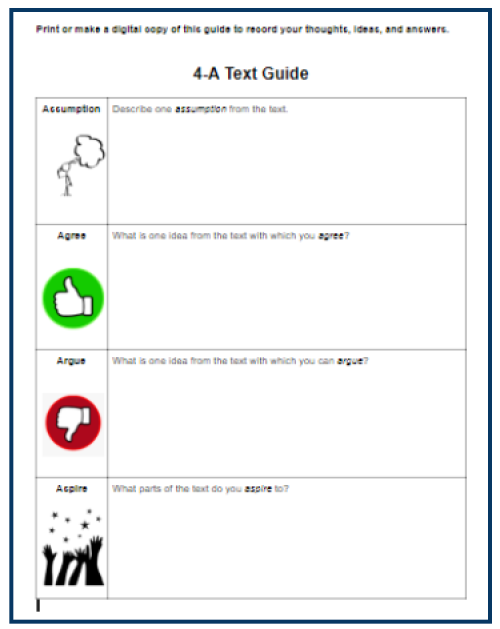This work by New American History is licensed under a Attribution-NonCommercial-ShareAlike 4.0 (CC BY-NC-SA 4.0) International License. Permissions beyond the scope of this license may be available at newamericanhistory.org.
Separate, Never Equal
Read for Understanding:
This lesson looks first at the historic, slavery ending 14th Amendment. However, after passage the amendment’s text was then interpreted in a way that compounded discrimination. Laws were passed around the country to enforce discrimination, historically called “Jim Crow” laws. We will look at how leaders in the African American community responded to the laws, as well as looking at the impact of the discrimination on daily life. Eventually everyday people took a stand against segregation laws, but it can still impact Americans today.
Key Vocabulary
Amendment - to officially change a document, law, or policy, such as a Constitutional amendment
Barbarism - cruel treatment of others
Discrimination - the unfair treatment of people based on their race, gender, age, etc.
Extremists - someone who holds radical views
Fallacy - false belief
Inferiority - a lower political or social status of a group of people
Jim Crow laws - state and local laws that enforced segregation between races
Ku Klux Klan (KKK) - a white supremacist group founded in the 1865 to intimidate African Americans and other minority groups from asserting themselves in any way, including politically
Legacy - money, property, ideas, or values
Lynching - the illegal killing of people by gangs of violent vigilantes
Militant - someone who aggressively supports a cause
Overturn - to reverse or abolish a law
Plessy v. Ferguson - A landmark Supreme Court case and ruling that upheld the legal separation of facilities for different races, establishing the “separate but equal” policy for many years
Repercussions - unwelcome consequences
Segregation - the practice of race-based separation in public spaces including schools, public transportation, restroom facilities, and neighborhoods; many communities in the United States were segregated for centuries, and while the Civil Rights Movement of the 1960s removed many legal barriers, some are still socially segregated.
Subordinate - lower status or rank
14th Amendment - A Constitutional amendment added after the U.S. Civil War providing citizenship to all people born or naturalized in the United States
Engage:
To what extent were “all men created equal” as a result of the 14th Amendment?
The 14th Amendment says that “No state shall make or enforce any law which shall abridge [restrict] the privileges or immunities of citizens of the United States; nor shall any state deprive any person of life, liberty, or property, without due process of law; nor deny to any person within its jurisdiction the equal protection of the laws.”
What do you think is meant by “equal protection of the laws”? Once you have some ideas, turn and talk with your partner. If working remotely, your teacher may provide opportunities to collaborate with classmates using video conferencing, access to an online chat feature, or breakout rooms.
Watch this short video from the Equal Justice Initiative regarding the impact of Reconstruction on the African American community in the years after the Civil War.
In 1896, the court case Plessy v. Ferguson sought to deal with the question of separate facilities for white citizens and those of other races. Homer Plessy, an African American man, boarded a train in Louisiana, sat in the car that was designated for white passengers, and was arrested. Using the 14th Amendment, he argued that segregation violated his civil rights. However, the Supreme Court disagreed and ruled that “separate but equal” facilities did not violate the 14th Amendment, upholding the Jim Crow laws of the era.
Reflecting on the video and the case Plessy v. Ferguson, turn and talk to a partner or, if working remotely, your teacher may use videoconferencing to provide opportunities to use the online chat feature or work with classmates in breakout rooms to discuss the following questions:
- How did your interpretation of the 14th Amendment compare with that of the Supreme Court?
- How did it contrast with the Supreme Court decision?
Your teacher may ask you to record your answers on an exit ticket.
Explore:
How did leaders in the African American community initially respond to the establishment of Jim Crow laws?
Read this excerpt on Bunk, “The Supreme Court Case that Enshrined White Supremacy in Law." Note: One of the most important features of Bunk is that it is constantly changing! As new content is added almost daily, the connections and tags are constantly changing. Keep that in mind as you explore Bunk today and in the future.
Take some time to explore the related Connections and tags.
- What do you notice?
- What do you find surprising?
- Which connection or tag are you most interested in exploring on your own?
- What NEW tag might you add between one or more connections?
Turn and talk to an elbow partner, or if working remotely, your teacher may allow you to share an interesting connection using the "Share Connection" button at the bottom of the screen, either in the chat feature if learning via videoconferencing such as Zoom, Teams or Google Meet, or on a digital platform such as Canvas or Google Classroom.
Next, read the following quotes from two African American civil rights leaders, Booker T. Washington and W.E.B. DuBois.
“In all things that are purely social we can be as separate as the fingers, yet one as the hand in all things essential to mutual progress…The opportunity to earn a dollar in a factory just now is worth infinitely more than the opportunity to spend a dollar in an opera-house.”
“They do not expect that the free right to vote, to enjoy civil rights, and to be educated, will come in a moment…Negroes must insist continually, in season and out of season, that voting is necessary to modern manhood, that color discrimination is barbarism, and that black boys need education as well as white boys.”
Summarize Washington’s and DuBois’ messages using your own words. Compare and contrast the actions they recommend to resist Jim Crow laws. Use this Venn diagram to help you organize your thoughts. Your teacher will give you directions on what format to use for your summary, depending on if you are working remotely or in the classroom.
Your teacher may ask you to record your answers on an exit ticket.
Explain:
What aspects of life did Jim Crow laws impact?
Examine these Jim Crow laws enforced in different states in the United States. from the 1880s through the 1960s.
- Choose three Jim Crow laws from the list to research and list them in the Jim Crow Laws Graphic Organizer.
- Next to each Jim Crow law, add the event or law that addressed or overturned it based on your research along with a brief explanation of how/why it was overturned.
- Finally, add an image/icon/ historical photograph that symbolizes or demonstrates each law.
Your teacher may ask you to submit your chart or record your answers on an exit ticket.
Elaborate:
How did everyday people take a stand against segregation laws?
Most people know how Martin Luther King, Jr. and Rosa Parks battled segregation laws, but there were many lesser-known Americans who also fought to overturn them, including fifteen-year-old Claudette Colvin.
Listen to this episode of the Radio Diaries podcast on Bunk to find out how she took a stand against Jim Crow laws: “Claudette Colvin: 'A Teenage Rosa Parks.”
As you listen, complete the Podcast Listening Guide.
After listening to the podcast, turn and talk with your partner (or if working remotely, use the chat box or other collaboration tool as directed by your teacher) discussing the following:
- I was surprised that…
- This reminded me of…
- If I could talk with Claudette, I would ask her…
Return to the Bunk site and notice the related content to the right of the excerpt. The stack of cards contains other articles, maps or content somehow connected to the original article on the left of the screen.
The connection icons located to the left of the cards here represent Idea, Person, Place and Time, which refers to a connected article from a different time period. These icons and the connected articles you see on the screen may change over time as new content is added to Bunk.
Select the “View Connections” button. Notice how the screen changes.
Take some time to explore this and other connections to the original excerpt you chose. Notice how each of the Connections icons (Idea, Place, Person, Time) leads you to a new stack of cards with different articles and topics. Each of these topics in turn has a list of “tags” below the icon to help guide you towards new and different content. After exploring the connections, respond to the following questions by turning and talking with your partner:
- How do current events relate to the actions of Claudette Colvin?
- How have you or someone you know taken a stand for a cause or a needed change?
If working remotely, your teacher may provide opportunities to collaborate with classmates using video conferencing, access to an online chat feature, or breakout rooms.
Your teacher may ask you to submit your Podcast Listening Guide or record your answers on an exit ticket.
Extend:
How is the legacy of Jim Crow laws still impacting Americans today?
Jim Crow laws began to dissolve with the integration of Major League Baseball in 1947, the U.S. Armed Services in 1948, and public schools in 1954 as a result of Brown v. Board of Education. However, widespread integration did not take place until the passing of the Civil Rights Act of 1964, which banned discrimination in public places.
Evaluate the long-term impact of Jim Crow laws by searching for the word segregation in Bunk.org.
Click on one of the articles that interests you. Notice the related content to the right of the excerpt. The stack of cards contains other articles, maps or content somehow connected to the original article on the left of the screen.
The connection icons located to the left of the cards here represent Idea, Person, Place and Time, which refers to a connected article from a different time period. These icons and the connected articles you see on the screen may change over time as new content is added to Bunk.
Select the “View Connections” button. Notice how the screen changes.
Take some time to explore this and other connections to the original excerpt you chose. Notice how each of the Connections icons (Idea, Place, Person, Time) leads you to a new stack of cards with different articles and topics. Each of these topics in turn has a list of “tags” below the icon to help guide you towards new and different content.
Read one or more excerpts of related content that discuss segregation’s long-term effects in today’s society. Take a few minutes to explore other tags you are curious about, or use the back arrow to select a different icon (idea, person, place, time).
Choose one article that you find interesting to read and complete the 4-A Text Guide:
Your teacher may ask you to submit your 4-A Text Guide or record your answers on an exit ticket.
Citations:
Du Bois, W. E. B. (William Edward Burghardt), 1868-1963. The Souls of Black Folk; Essays and Sketches. Chicago, A. G. McClurg, 1903. New York :Johnson Reprint Corp., 1968.
Homer Adolph Plessy Plaque . Social Welfare History Project. VCU Libraries. Accessed July 24, 2020. https://socialwelfare.library.vcu.edu/wp-content/uploads/2013/09/400px-PlessyBronze.jpg.
“Jim Crow Laws.” National Parks Service. U.S. Department of the Interior, April 17, 2018. https://www.nps.gov/malu/learn/education/jim_crow_laws.htm.
Menand, Louis. “The Supreme Court Case That Enshrined White Supremacy in Law.” Bunk History. The New Yorker, February 4, 2019. https://www.bunkhistory.org/resources/3743.
"Reconstruction in America." Equal Justice Initiative. 2020. Youtube. https://www.youtube.com/watch?v=HRj35PtXnLs
Richman, Joe. “Claudette Colvin: 'A Teenage Rosa Parks.” Bunk History. Radio Diaries, March 2, 2016. https://www.bunkhistory.org/resources/1743.
Washington, Booker T. “The Atlanta Compromise Address.” Speech, The Cotton States and International Exposition, Atlanta, GA, September 18, 1895.


